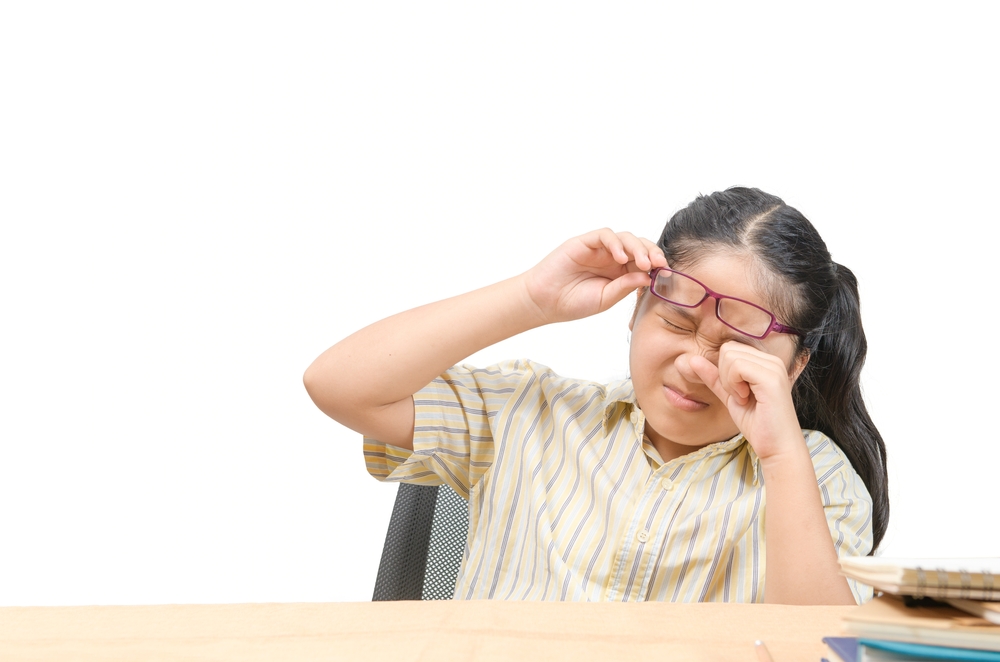
Children can experience a variety of vision problems, ranging from common refractive errors like nearsightedness (myopia) and farsightedness (hyperopia) to more complex issues like amblyopia (lazy eye) and strabismus (misaligned eyes). These vision problems can have a significant impact on your child's development, learning, and overall quality of life. Understanding the common vision problems in children, their causes, symptoms, and treatment options is essential for ensuring your child receives the care they need.
Link Between Headaches and Vision Problems in Children
One of the most common signs of vision problems in children is headaches. If your child frequently complains of headaches, it's important to consider the possibility of an underlying vision issue. Headaches can be a result of eye strain, difficulty focusing, or other vision-related problems.
When a child's eyes have to work harder to see clearly, it can lead to muscle fatigue and tension, resulting in headaches. This is particularly common in children with refractive errors like myopia or hyperopia, as their eyes have to constantly adjust to compensate for the blurred vision.
What is Myopia?
Myopia, or nearsightedness, is a refractive error that causes distant objects to appear blurred, while nearby objects remain clear. This is often due to the eyeball being slightly longer than normal, causing light to focus in front of the retina instead of directly on it. Symptoms of myopia in children may include:
- Squinting or straining to see distant objects
- Sitting close to the TV or holding books and devices very close to their eyes
- Experiencing headaches or eye strain after prolonged near-work activities
Myopia is often caused by a combination of genetic and environmental factors, such as excessive time spent on close-up activities like reading, using digital devices, or lack of outdoor time.
Treatment for myopia typically involves corrective lenses, such as glasses or contact lenses, to help focus light properly on the retina. In some cases specialized lenses may be recommended to slow the progression of myopia.
Understanding Hyperopia
Hyperopia, or farsightedness, is a refractive error that causes nearby objects to appear blurred, while distant objects may be seen more clearly. This is often due to the eyeball being slightly shorter than normal, causing light to focus behind the retina. Symptoms of hyperopia in children may include:
- Difficulty focusing on close-up tasks like reading or writing
- Frequent eye strain or fatigue
- Headaches after prolonged near-work activities
- Occasional blurred vision, especially for close-up tasks
Hyperopia can be caused by a combination of genetic and environmental factors, such as the shape of the eye or the curvature of the cornea.
Treatment for hyperopia typically involves corrective lenses, such as glasses or contact lenses, to help focus light properly on the retina. In some cases, vision therapy or specialized lenses may be recommended to address the underlying causes of hyperopia.
The Importance of Regular Pediatric Eye Exams
Regular pediatric eye exams are crucial for the early detection and treatment of vision problems in children. The American Optometric Association recommends that children have their first comprehensive eye exam at 6 months of age, followed by additional exams at 3 years old and 5-6 years old, and then annually thereafter.
During these exams, your child's eye doctor will assess their visual acuity, eye alignment, and overall eye health. They may also perform tests to identify any refractive errors, such as myopia or hyperopia, and develop a customized treatment plan to address any issues.
Early detection and treatment of vision problems are essential for ensuring your child's optimal visual development and academic success. Untreated vision problems can lead to difficulties in learning, behavioral issues, and even long-term vision impairment. By scheduling regular eye exams and being aware of the signs and symptoms of vision problems, you can help ensure your child receives the care they need.
Ensuring Your Child’s Optimal Vision with the Help of Dr. Gaston
Your child's vision is a precious gift, and it's your responsibility as a parent to ensure they receive the care and attention they need. By understanding the common vision problems in children, recognizing the link between headaches and vision issues, and prioritizing regular eye exams, you can take proactive steps to safeguard your child's visual health.
At Unique Eyecare & Optical, we are dedicated to providing comprehensive, personalized eye care for children of all ages. Dr. Gaston uses the latest technologies and techniques to diagnose and treat a wide range of vision problems, ensuring your child's eyes are healthy and their vision is clear. Visit our office in Houston, Texas, or call (713) 522-2007 to book your child’s eye exam today.










